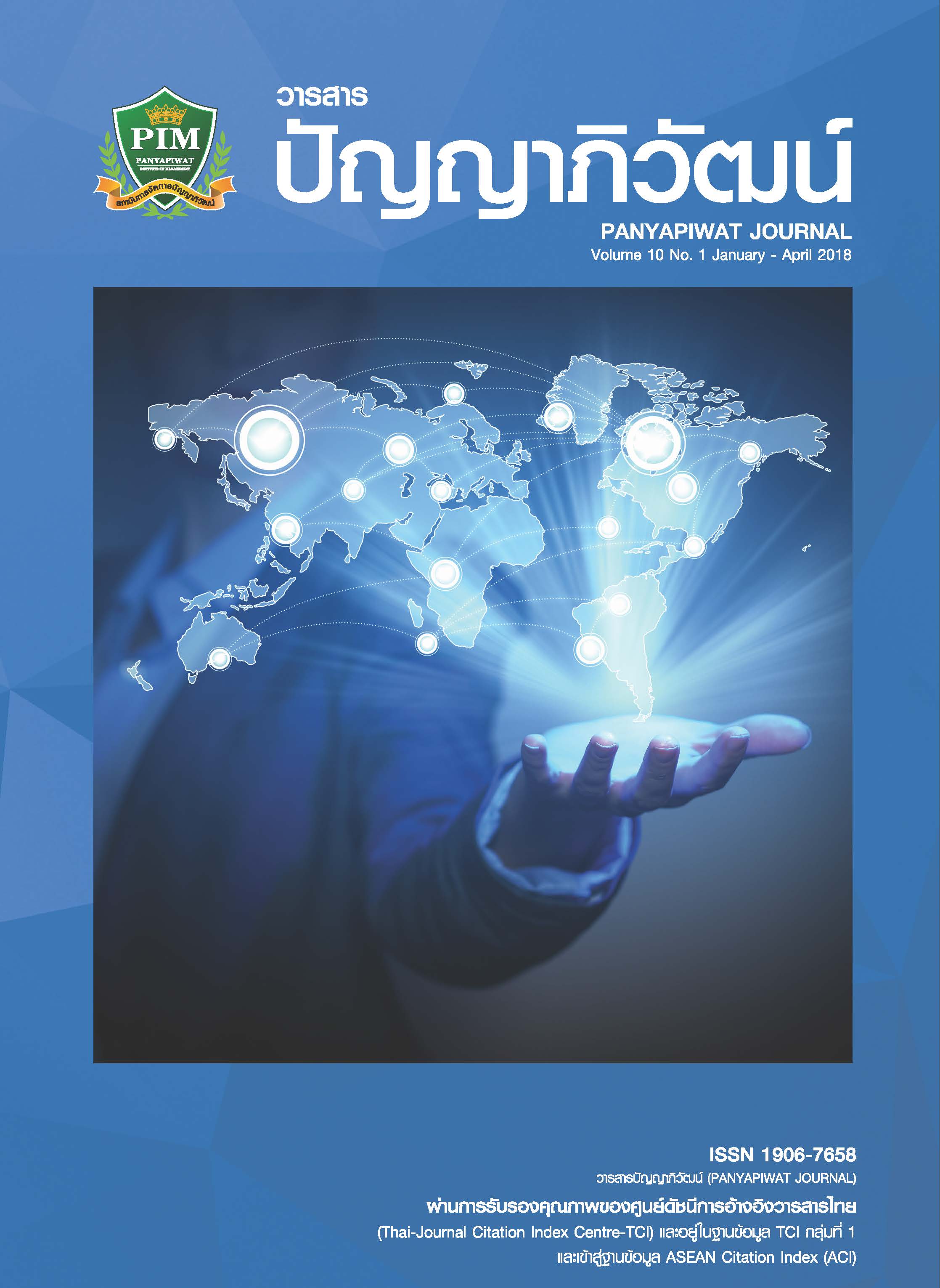แนวทางการออกแบบและพัฒนาผลิตภัณฑ์ธัญชาติตามความต้องการของลูกค้าโดยประยุกต์ใช้คาโนโมเดล
Main Article Content
Abstract
การวิจัยมีจุดประสงค์เพื่อศึกษาส่วนประสมทางการตลาด ด้านผลิตภัณฑ์ ด้านราคา ด้านช่องทางการจัดจำหน่าย ด้านการส่งเสริมทางการตลาด และการออกแบบและพัฒนาผลิตภัณฑ์ธัญชาติที่เหมาะสมกับความต้องการของลูกค้า โดยใช้แบบสอบถามในการเก็บรวบรวมข้อมูลจากบุคคลที่มีอายุตั้งแต่ 20 ปีขึ้นไปที่เคยมีประสบการณ์ในการซื้อสินค้าอาหารเช้าพร้อมบริโภค (ซีเรียล) ในเขตอำเภอเมือง จังหวัดเชียงใหม่ จำนวน 400 ราย ผลการวิจัยพบว่า ปัจจัยส่วนประสมทางการตลาดที่มีผลต่อการตัดสินใจซื้อผลิตภัณฑ์อาหารธัญชาติ ในภาพรวมอยู่ในระดับมากในทุกด้าน ( = 3.85, S.D. = 0.84) ได้แก่ ด้านผลิตภัณฑ์ (Product) (
= 3.87, S.D. = 0.59) ด้านราคา (Price) (
= 3.97, S.D. = 0.65) ด้านช่องทางการจำหน่าย (Place) (
= 4.11, S.D. = 0.82) ด้านการส่งเสริมทางการตลาด (Promotion) (
= 3.46, S.D. = 0.35) แนวทางการออกแบบและพัฒนาผลิตภัณฑ์ธัญชาติที่เหมาะสมกับความต้องการของลูกค้าที่ทำให้ลูกค้าเกิดความพึงพอใจที่ควรต้องมีในผลิตภัณฑ์ธัญชาติคือ 1) มีมาตรฐาน อย. รับรอง 2) มีตราสินค้าติดที่แสดงความใส่ใจในสุขภาพ และ 3) มีวันผลิตและวันหมดอายุบนบรรจุภัณฑ์
This study aimed to investigate the marketing mix’s factors in terms of product, price, place of distribution and promotion, as well as the form of the cereal grain product that meet the customers’ needs. The questionnaires were used to collect information from 400 respondents who age more than 20 years old that live in Muang, Chiang Mai and had experience in purchase and consume ready-to-eat breakfast (cereals). The results showed that the marketing mix’s factors that affect the decision to purchase cereal grain product in overall was at a high level for all aspects ( = 3.85, S.D. = 0.84), which included product aspect (
= 3.87, S.D. = 0.59), in terms of price aspect (
= 3.97, S.D. = 0.65), in terms of place aspect (
= 4.11, S.D. = 0.82), and in terms of promotion aspect (
= 3.46, S.D. = 0.35). The guidelines for the product design and development of cereal grain product that meet the customers’ needs and able to satisfy the customers are as follows; 1) The product should be standardized and certified by Thai FDA. 2) The product should show the brand or logo that represents consumer health consciousness. And 3) Manufacturing and expiry date should be specified on packaging clearly.
Article Details
I and co-author(s) certify that articles of this proposal had not yet been published and is not in the process of publication in journals or other published sources. I and co-author accept the rules of the manuscript consideration. Both agree that the editors have the right to consider and make recommendations to the appropriate source. With this rights offering articles that have been published to Panyapiwat Institute of Management. If there is a claim of copyright infringement on the part of the text or graphics that appear in the article. I and co-author(s) agree on sole responsibility.
References
Cui, S. W. & Roberts, K. T. (2009). Chapter 13 Dietary fiber: fulfilling the promise of added-value formulations. In Kasapis, S., Norton, I. T. & Ubbink, J. B. (Eds.). Modern Biopolymer Science: bridging the divide between fundamental treatise and industrial application. (pp. 399-448).USA: Academic Press.
Green Net (2014). Consumers of Organic product in Thailand: The analysis. Retrieved March 23, 2016, from https://www.greennet.or.th/article/1781 [in Thai]
Hinthao, B. (2012). The Participatory Action Research for the Development of Community Enterprise Network Pattern: A Case Study of Rice Product Housewife Groups in Phitsanuloke Province. Retrieved July 10, 2014, from https://ms.psru.acth/admin/file/Bussaba2014.pdf [in Thai]
Kano, N., Seraku, N., Takahashi, F. & Tsjui, S. (1984). Attractive Quality and must be Quality Hinshitsu, 14(2), 147-156.
McCarthy, E. J. & Perreault, W. D. Jr. (1996). Basic marketing: A global managerial approach. (12th ed.). Chicago: Irwin.
Ong-in, P. & Naruenartwongsakul, S. (2010). Effect of flour preconditioning and extrusion conditions on physicochemical properties and glycemic index of mung bean flour based extruded. Rajamangala University of Technology Tawan-Ok. The 3rd seminar, 20-21 May 2010. [in Thai]
Pongwiritthon, R. & Syers, K. (2014). Guidelines for Sustainable Tribe Cultural Tourism Development.Journal of
Community Development Research, 7(2), 35-46. [in Thai]
Pongwiritton, R., Pakvipas, P., Chongesiriroj, S. & Kantawongwan, B. (2017). Marketing mix Factors Affecting Buying Decision Decision of Textile Handicraft from Lanna's Ethnic Wisdom: Pgazkoenyau. Panyapiwat Journal, 9(1), 25-37. [in Thai]
Sauerwein, E. (1997). The Kano Model: How to delight your customers. International Working Seminar on production Economics, Innsbruck/Igls/Igls/Austria, February 19-23, 1996, pp. 313-327.


